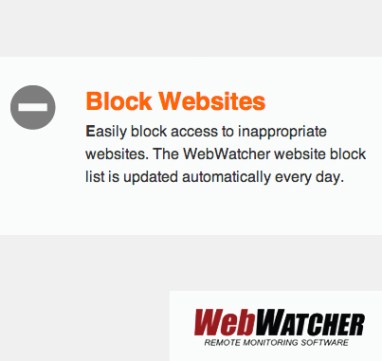Overview: According to one survey, 73 percent of 12- to 17-year-olds reported having been victims of school bullying in their lifetimes, and 34 percent have experienced cyberbullying. Thirty-two percent of respondents reported bullying others. This article discusses behavioral changes that may signal that a teen is being harassed or harassing others online and what parents can do to stop or prevent online bullying.
Cyberbulling Definition: When someone repeatedly threatens, harasses, mistreats, or makes fun of another person (on purpose) online or while using cell phones or other electronic devices.” – Cyberbulling Research Center
Bullying Is Not What It Used to Be
In today’s world, most parents are aware that bullying isn’t confined to the playground anymore. Cyberbullying is something of a buzzword, and parents know that their children might be subject to it. But recognizing cyberbullying when it occurs is something else again. Take a look at what you need to know about how to recognize cyberbullying and what to do when you see it.
How Do I Know If My Child is Being Cyberbullied?
In a recent survey, 73 percent of 12- to 17-year-olds surveyed reported having been victims of school bullying in their lifetimes. Of those, 34 percent have experienced cyberbullying, and 32 percent reported bullying others.
Yet parents often miss the signs. Some may still think of signs of bullying in the traditional terms of scrapes and bruises, ripped clothes, and missing money or personal items. While these can be signs of physical bullying, they don’t help to identify cyberbullying. Parents looking for these signs may be missing the big picture.
Other parents may be well aware that cyberbullying signs will look different than the signs of physical or in-person bullying, but they may not know exactly what they should be looking for.
What’s more, the signs of cyberbullying can be subtle. Even parents who know what to look for might miss them. Different children might display different signs, so even if you’ve been through it with one child, you might not recognize the signs in another.
Look for Behavioral Changes
Bullying of any kind often results in behavioral changes. Signs that indicate a child may be dealing with cyberbullying include:
- An unwillingness to use computers or other digital devices
- Appearing nervous, depressed, or angry after using a computer or digital device or after receiving a text message or alert
- Apprehension about going to school
- Secrecy about what is happening in their online life
- Withdrawal from friends and family
- Changes or reductions in their circle of friends
Keep in mind that while more traditional bullying only occurs at school or while the child is with their peers, cyberbullying can occur anywhere, including in the places your child should feel safest, like their home. That means that you may actually see more symptoms of cyberbullying at home than you might see of other types of bullying. You just have to know what to look for.
It’s also important to note that cyberbullying and in-person bullying can happen simultaneously. If your child is being bullied online by peers, it’s likely that they’re also being bullied in person when they see those peers. And what’s more, according to a Florida Atlantic University study, 64 percent of children who experienced cyberbullying said that it impacted their learning and whether they felt safe at school.
Overlap Between Bullies and Bullied
It’s also important for parents to be aware that there is an overlap between young people who are victims of cyberbullies and young people who participate in cyberbullying. One study found about one in 20 young people have found themselves in both situations.
It may be that the anonymity of the internet gives children who wouldn’t normally be bullies in other circumstances the power and freedom to hit back, and bullying others may make them feel powerful and in control when their own experiences as victims made them feel powerless and out of control.
It’s also far easier to bully someone online (and escape consequences) than it is to do it face-to-face.
Of course, you don’t want your child to be a cyberbully, but be aware that a child can be both a victim and a perpetrator of online harassment.
Some signs of being a cyberbully include:
- Using multiple accounts for online platforms
- Switching, hiding, or turning off screens when you or other adults approach
- Excessive use of computers and digital devices
- Secrecy and refusal to discuss their use of computers and digital devices
- Distress when the use of a computer or digital device is denied
While some of the signs are very different for cyberbullies and cyberbully victims, there is some overlap, especially in how children in both groups are often inclined to hide the truth from their parents. You’ll want to keep an eye out for both groups of behaviors in order to help your child.
How Parents Can Help a Cyberbully Victim

Cyberbullying victims can experience a variety of problems. In addition to having their learning and ability to feel safe at school impacted, cyberbullying victims experience physical, social, emotional, and behavior problems and are more likely to struggle with self-esteem.
What action you might take depends largely on the source of the cyberbullying your child is experiencing. A first step is to make sure that you’re having conversations with your children about online safety, and especially about how to block and report people who harass them on any platform they use. If your child is being bothered by someone who doesn’t know them in real life and who can’t follow them to another platform, this might be all that’s needed.
However, if the cyberbullying is coming from your child’s schoolmates, then blocking the bully may not be enough. The behavior may spill offline or onto school-related platforms where your child may not be able to easily avoid the bully. It’s important to learn the bullying and cyberbullying policies of your child’s school, so you can ask them to take appropriate steps to protect them. If you know the offender’s parents, you may also be able to have a productive conversation with them.
It’s also important to talk to your child about bullying they may experience online. In some situations, a child may feel that parental involvement with the school or the bully’s family will make the situation worse. The ultimate call is yours, but role-playing and discussing ways that your child can stand up for themselves may enable your child to handle the behavior on their own in a safe way without your direct involvement. In some situations, this may be a better choice, especially for minor cases involving older teens.
Staying on top of cyberbullying issues is your first line of defense because it allows you to make the best and most informed decisions for your child going forward. Parental monitoring software like Webwatcher can help ensure that you’re aware of what’s going on in your child’s digital life.





